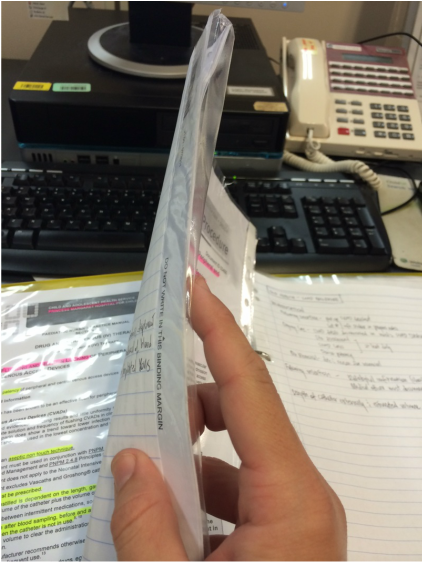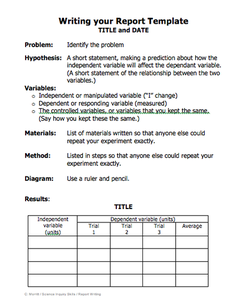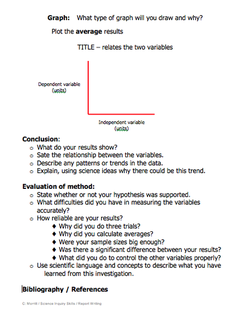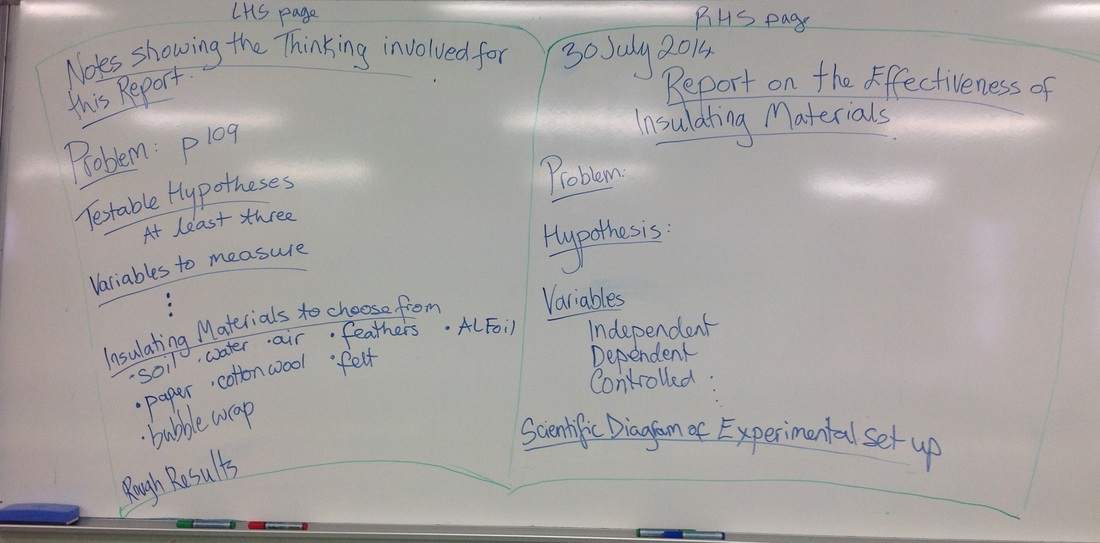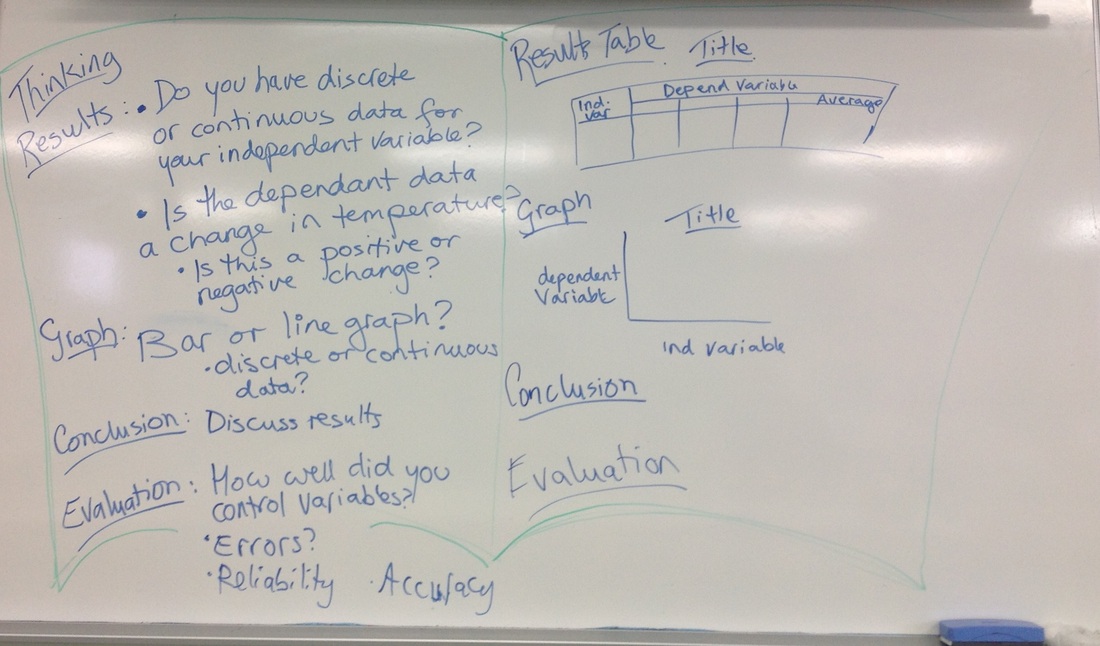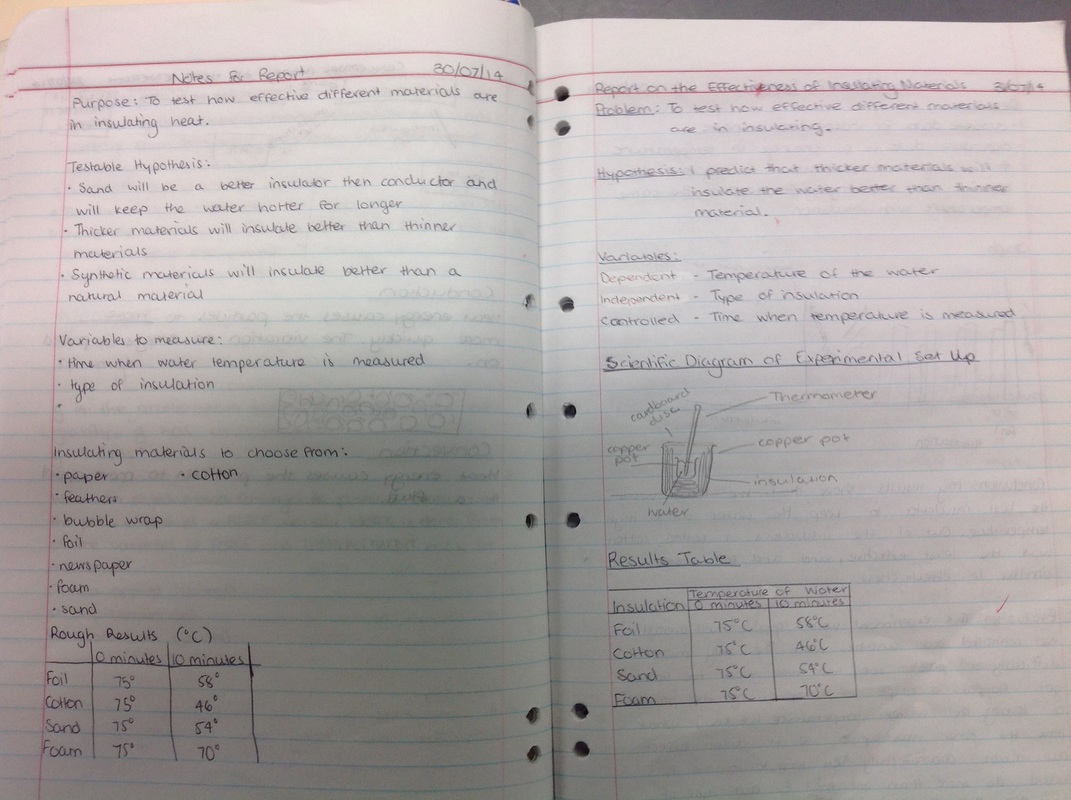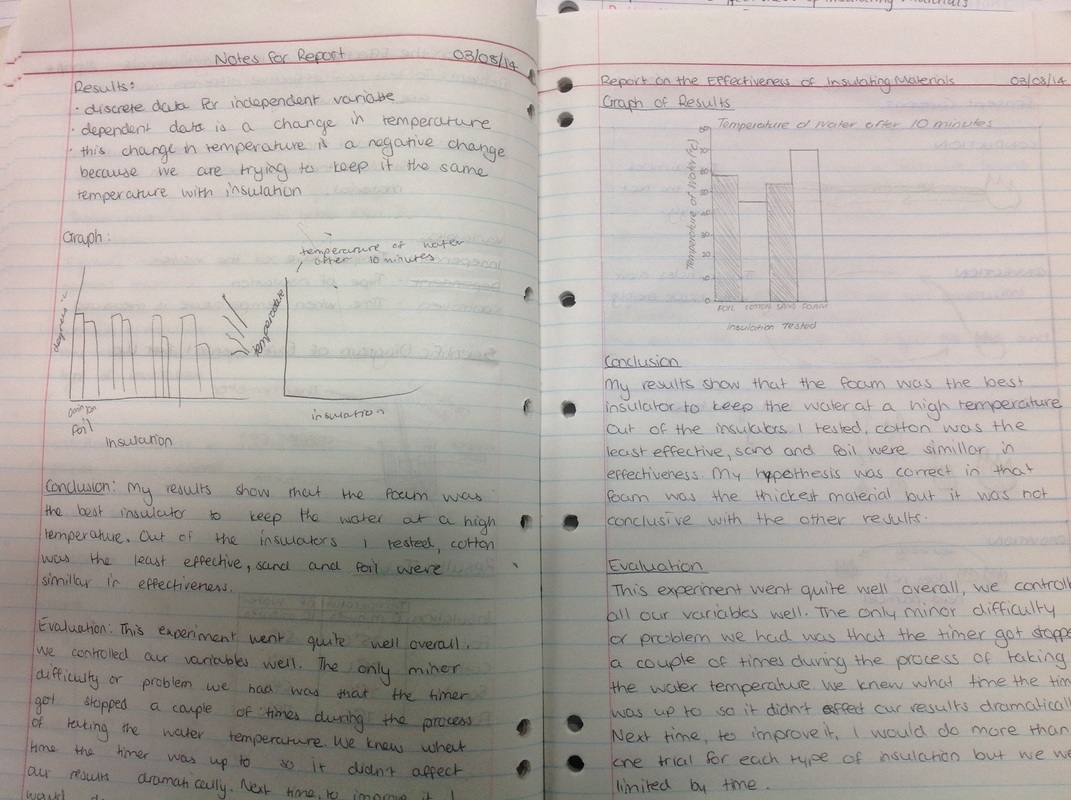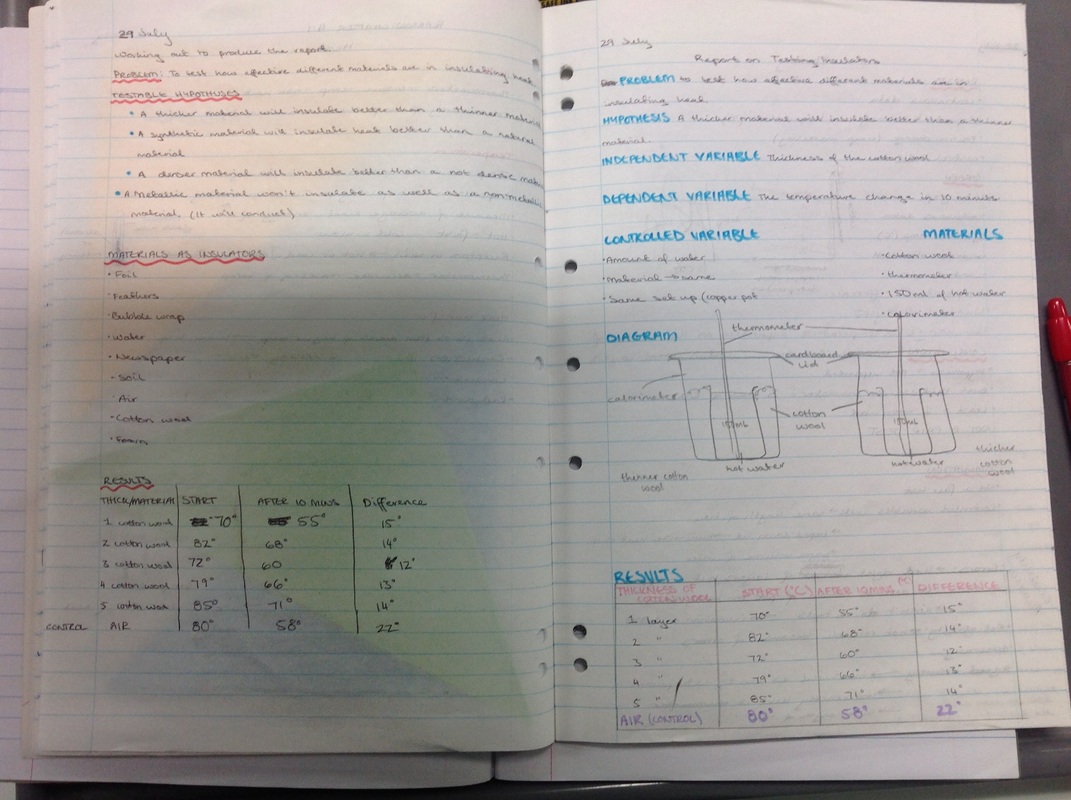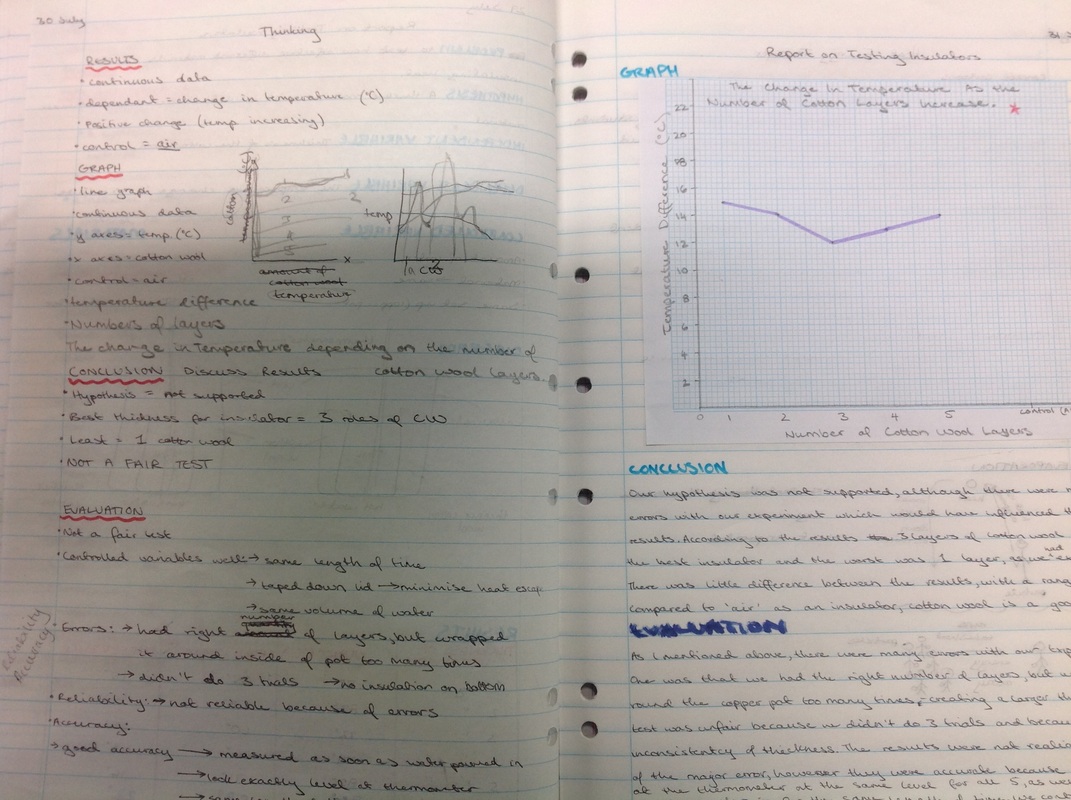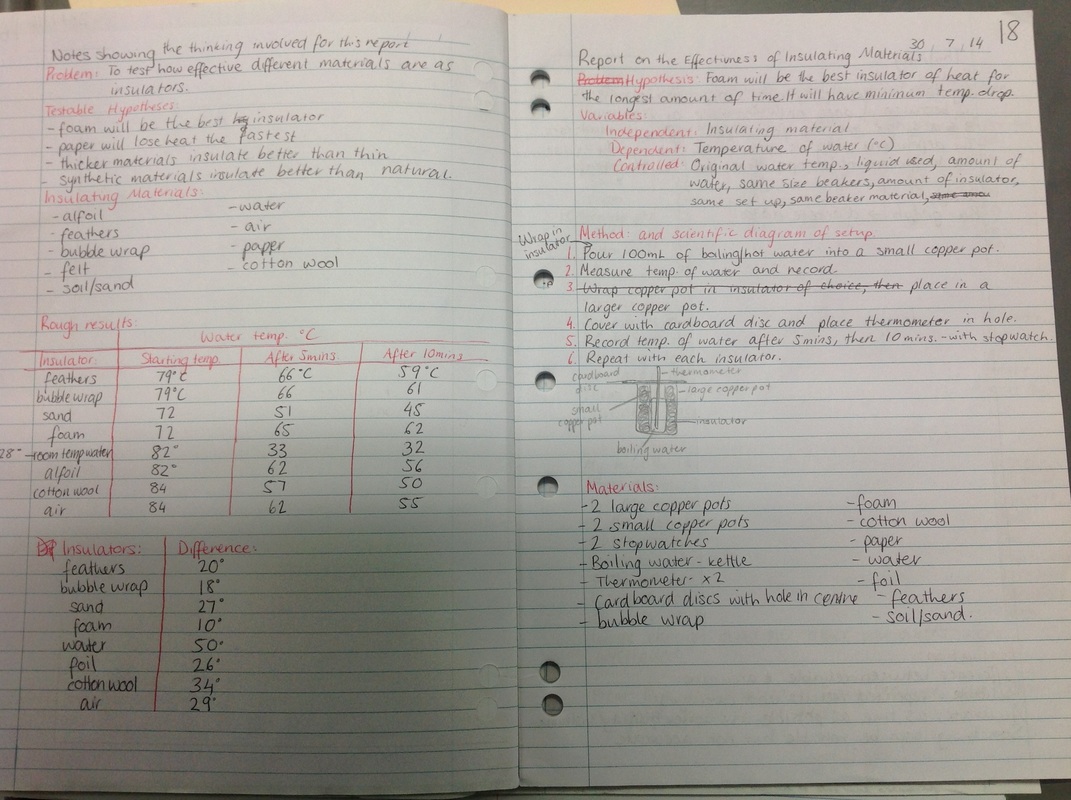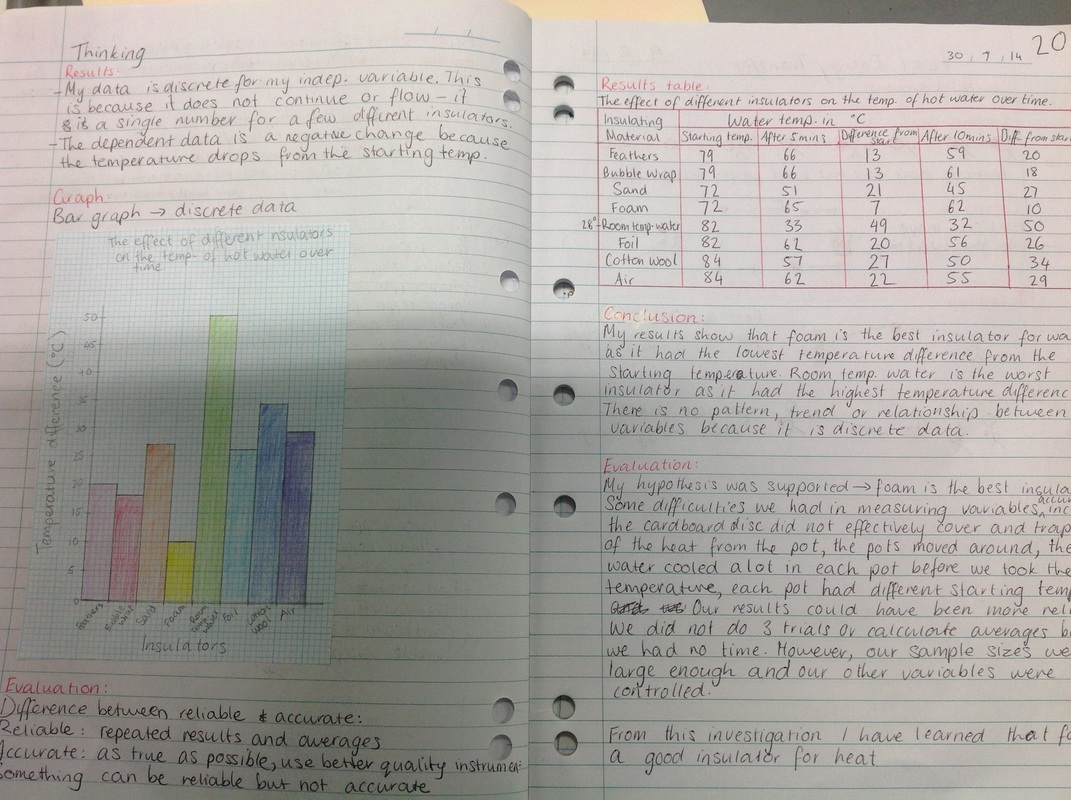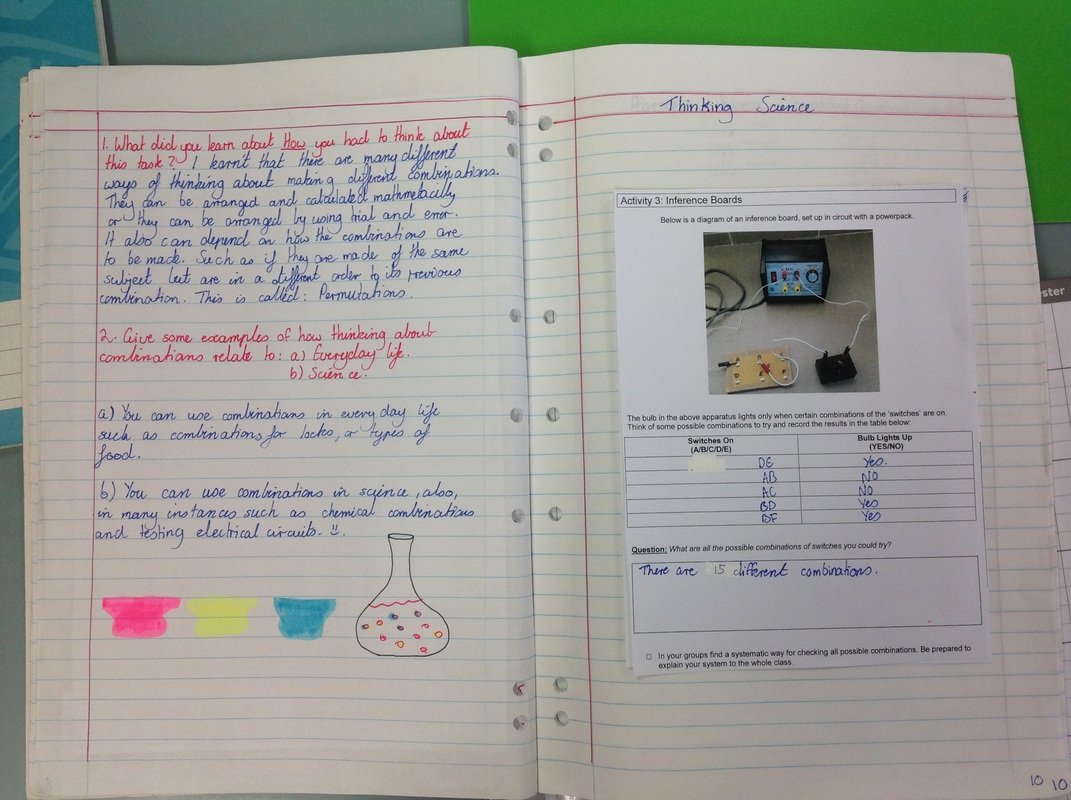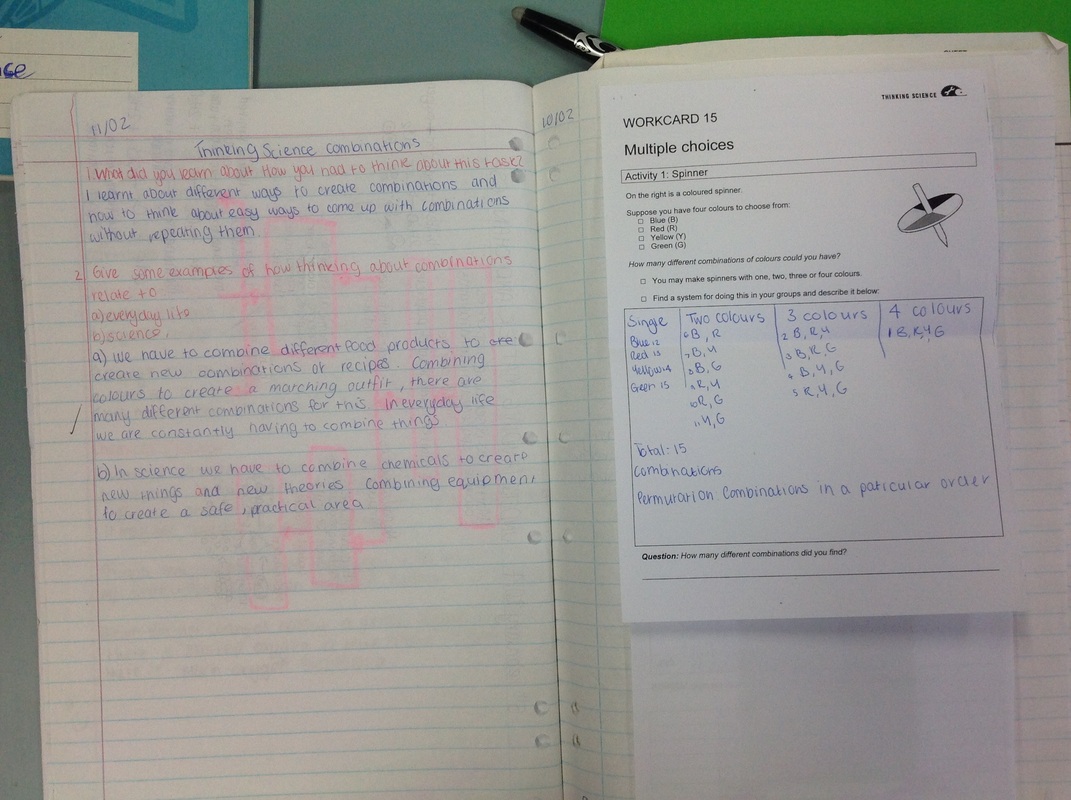It is important to keep a neat record of your science studies.
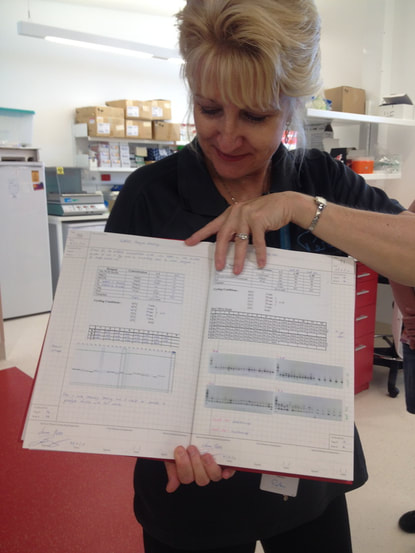
Harry Perkins Institute for Medical Research.
Ms Charman shows off the notebook of a PhD student who is conducting medical research. Records of all work must neat and complete. This is what we expect of our science students too. Its good training!
Ms Charman shows off the notebook of a PhD student who is conducting medical research. Records of all work must neat and complete. This is what we expect of our science students too. Its good training!
Interactive Science Notebooks (ISN)
Instructions for the embedded sheet "Guidelines for the Interactive Science Notebook"
Do you have spaces on your Left-Side pages?
Ideas for additional tasks;
- glossary of words from the Right-side page
- create a flow chart or classification chart to show how you understand the ideas written on the right
Post Graduate student uses Interactive Notebooking for research
|
A nurse pursuing post-graduate studies shows how she organises her research for her thesis.
She uses the Left-side / Right-side method. Journal and reading material are filed on the Right-side, her notes and reflections are made on the corresponding Left-side. When she writes her draft thesis, if she needs to refer back to the original source it is right where she needs it. Right on! |
The next few entries are reflections on the use of Interactive Science Notebooks
Science Report-Writing and the Interactive Science Notebook
|
One of the problems of using the ISN is when students come to write their scientific reports of Investigations.
So should we;
I am trialing the third option, listed above, since the ISN is a tool for;
The following images show examples of student use of left and right pages to demonstrate their thinking on the left and the formal report on the right pages. These images were taken before the students work was marked. The next step maybe for the teacher to create uniform scaffolding for the thinking that should appear on the left-side pages. |
Three student examples of ISN Report-Writing.
Remember that when reading the ISN the right pages flow through the formal aspects of a concept while the left pages show the student-thinking, or study of the concept.
Thinking Science and the ISN
Another challenge is how to record the "Thinking Science" activities. One suggestion is for students to discard their note-making sheets as a reward for thinking. My solution is to keep the formal sheets on the right-side pages and allow students to articulate their metacognition on the left-side pages. This reinforces that they are learning reasoning patterns. Students may refer back to their pages and modify their ideas as necessary.
The two images below show how two students organised their formal sheets on the right and their understandings on the left.
The two images below show how two students organised their formal sheets on the right and their understandings on the left.
